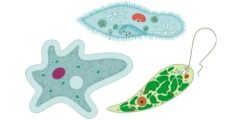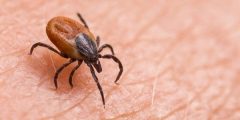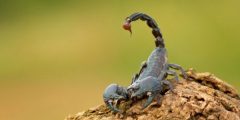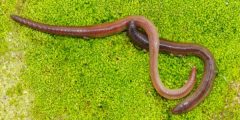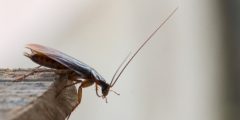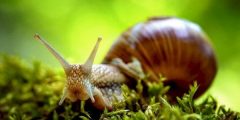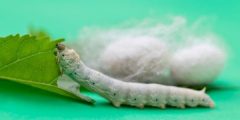bed bug
Bedbugs, or bed bugs, are small insects that are brown or reddish in color. They are broad-bodied and flat, and their length ranges between 4-5 mm. They have atrophied wings that have no known function and are unable to fly.
Bed bugs feed on the blood of humans and warm-blooded animals, and although they are of a size that can be easily seen, the truth is that it is difficult to find them, because they hide during the day, and are usually active at night while people are sleeping, and after they get their meal they return to hide. Again to digest them, which may take several days, and these insects can live for an entire year without food.
The bed bug (scientific name: Cimex lectularius) is known by several names, including: bed lice, mahogany flats, red coats, and wall lice. .
The bed bug was given this name because it is usually found in beds, and it can also be found in places where humans spend a lot of time, such as hotels, airplanes, and sofas. The bed bug, or what is known as bed bug, is classified as a class of arthropod insects.
Bedbug habitat
Bed bugs move from one place to another easily, and can hide in bags, shoe cabinets, and boxes. They also hide in any crevices close to humans. They are also found in wallpaper, behind baseboards, upholstery, furniture cracks, picture frames, and electrical switchboards. .
Read also:How old is the fly?Bedbugs also live in temporary and mobile places. Such as furniture on buses, trains, cars, and under seats.
Bed bugs can invade various homes, from small homes to hospitals, offices, halls of all kinds, stores, cinemas, theaters, and clothing stores.
Bed bug food
Bed bugs do not have teeth or tongue to chew food and can rely only on sucking. Bed bugs suck human blood and the blood of mammals. They do not feed on each other in the absence of a host, as some believe. Otherwise, this insect would disappear in a short time.
This behavior also means reducing the chances of mating, and it is noteworthy that bugs do not contain blood and hemoglobin as most creatures do.
Bed bugs do not feed on food scraps, crumbs, dead skin, or hair, as do some types of insects, such as cockroaches or dust mites. Bed bugs cannot feed on wood, but rather live only in its crevices until they reach their destination near humans and pets, so they can suck their blood. .
Also, bed bugs cannot feed on other types of insects.
Bed bug life cycle
The life cycle of a bed bug goes through the following stages:
- eggs
The female bed bug lays eggs singly, or in the form of masses or clusters. The number of eggs laid by the female at one time reaches fifty eggs. The eggs are white in color, and the length of each one does not exceed 1 millimeter. The insect attaches its eggs to rough surfaces using a sticky substance that it secretes. The eggs hatch within a week or two.
Read also:What is amoeba?- The mermaid
The egg hatches into a colorless nymph, and the nymph needs a blood meal to be able to molt five times to reach puberty, and as it molts, its color becomes dark.
The period of the nymphal stage depends on the temperature. It may take three weeks at high temperatures, or several months if the temperature is low.
- Adult insect
After the nymph molts for the fifth time, it becomes an adult insect, and its average lifespan reaches ten months, although some may live a little longer.
Bed bug bite
The bed bug inserts one part of its needle-shaped mouth into the human skin, or the host in general, and begins sucking its blood. During this, part of its saliva is transferred to the punctured skin, and its body can be filled with blood within a period ranging between 3-10 minutes.
Blood can be seen through the skin of the body in the form of dark dots. During this period, the host is usually asleep, so he is not expected to feel pain at first.
However, constant exposure to insect bites and the entry of their saliva into the body causes itching and swelling of the skin as an allergic reaction. A bed bug bite differs from a mosquito bite in that the site of the bite is more swollen, and it differs from a flea bite in that the site of the bite does not contain a red spot in the middle.
Read also:What is amoeba?The presence of these insects in the home can be inferred by seeing them, or seeing their waste that appears in the form of dark spots, and blood spots from crushed insects can also be observed. Although the bite of bed bugs does not transmit diseases to humans, their presence in the home causes inconvenience and distress. , and must be disposed of.
Ways to get rid of bed bugs
Any house can be exposed to the presence of bed bugs, and this does not necessarily indicate that the house is dirty, because bed bugs feed on blood and not filth, and these insects can reach the home in several ways, including: buying used furniture that is infested with bedbugs, or the insects can be picked up While traveling and transporting it home as luggage.
It can also be transmitted from neighboring apartments if there are cracks or gaps in the wall. Bed bugs can be eliminated by following the following methods:
- Finding the hiding places of insects, and you can search for them using a flashlight in the seams of the bedspreads, between the stitching places, or under the bedspreads, or in the pieces of furniture in the bedroom, or in the cracks in the wall, or in door and window frames, picture frames, and in the wallpaper. Or in the things accumulated in the rooms.
- Scrub the seams of the mattress with a stiff brush to get rid of insects and their eggs.
- Repairing wall cracks, and getting rid of or repairing damaged wallpaper.
- Wash bedding, clothes, and curtains with hot water, then dry them using a clothes dryer at the highest temperature. As for delicate clothes that cannot be dried with a dryer, they must be soaked in hot water with a large amount of washing powder added to it for several hours before rinsing them.
- Place children's toys made of cloth, wool textiles, and shoes in the clothes dryer for half an hour.
- Dispose of items infested with insects that cannot be cleaned and sterilized by placing them in a tightly sealed plastic bag, then placing them in a garbage container.
- Clean floors, carpets, and pieces of furniture using a vacuum cleaner, focusing on insect hiding places such as gaps and cracks. To ensure that insects do not return to the house again, you must dispose of the vacuum cleaner bag by placing it in a tightly closed plastic bag and then placing it in the container.
- Get rid of the bed frame if it is infested with insects, if possible. Otherwise, it and the mattress can be wrapped in a tight plastic cover for at least a year.
- Use insecticides when necessary, taking into account the use of a pesticide specifically designed to get rid of bed bugs, and strictly adhering to the instructions on the package cover. Insecticides can be used that eliminate the ability of insects to reproduce, and the entire building can also be fumigated with toxic gas.
- Get rid of piles of unused things, because a cluttered house provides good places for bed bugs to hide.
Ways to prevent bed bugs
There are many methods that can be followed to reduce the chances of infection and eliminate bed bugs permanently, and the most important methods of prevention are the following:
- Expose bedding and furniture to sunlight, sterilize them, and inspect them regularly.
- Noticing cracks in beds, furniture, wallpaper, or paintings.
- Reduce the places where bed bugs can hide.
- Continuously arranging the house, furniture, bags, and getting rid of clutter.
- Vacuum and clean well, especially under and behind beds.
- Repair or remove peeling wallpaper and tighten loose electrical panels.
- Check for any openings that allow access inside the wall, such as areas where pipes, wires, and other utility services enter.
- Inspect the house using alcohol, glass cleaner, or wet baby wipes to check whether the existing stains are bed bug droppings. If the stains dissolve to a reddish-brown color when rubbed, the stains could be bed bug droppings.
- Check pet sitting areas.
- Inspect furniture for bed bugs, especially around the zippers of upholstered chairs and sofas. Check the seating area and any creases along the sides and back of the chair or sofa, and check the legs as well.
- Check places between curtain folds, under carpets, window and door frames, and around light bulbs and lighting.
- Good ventilation of the house to prevent humidity.

